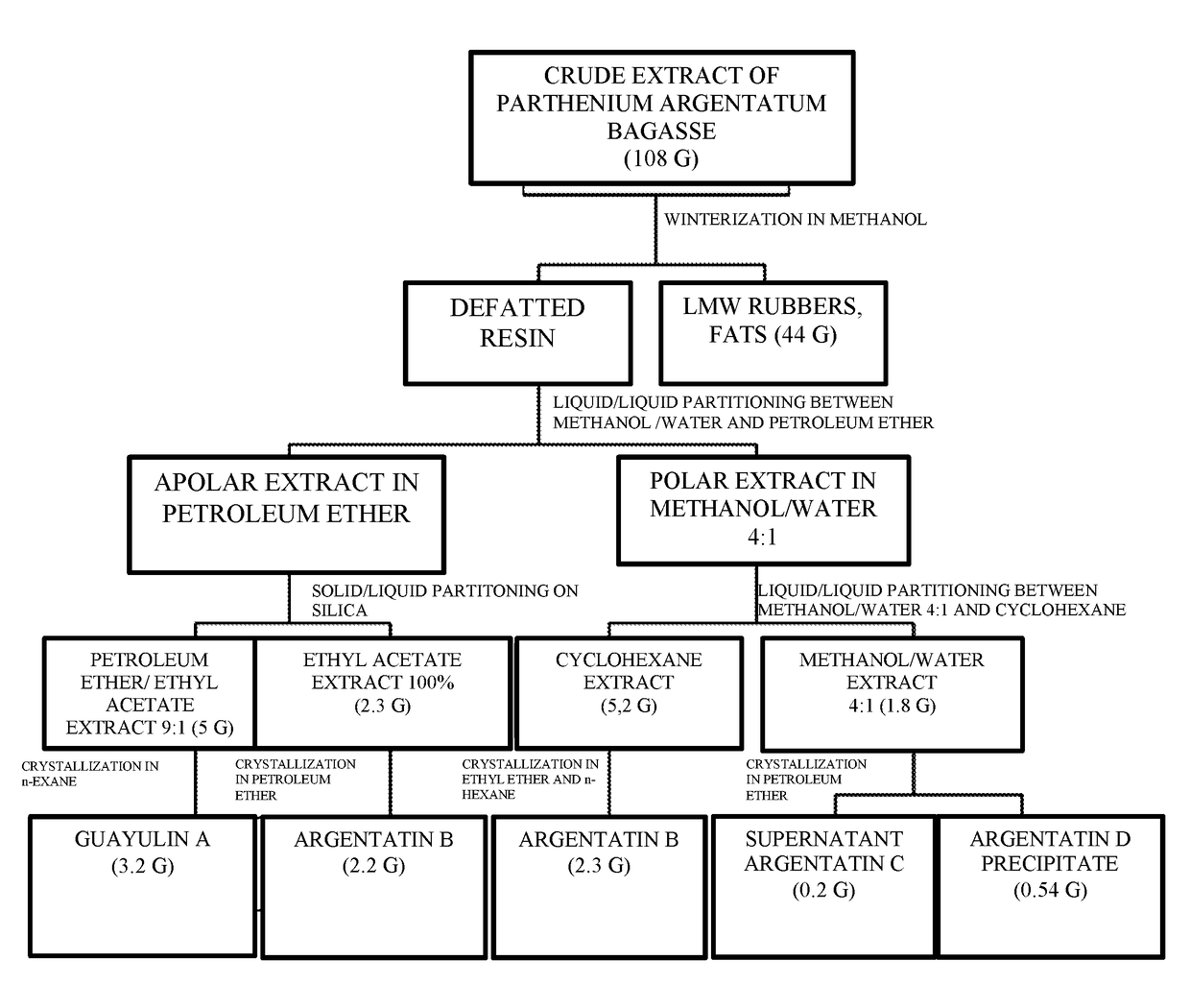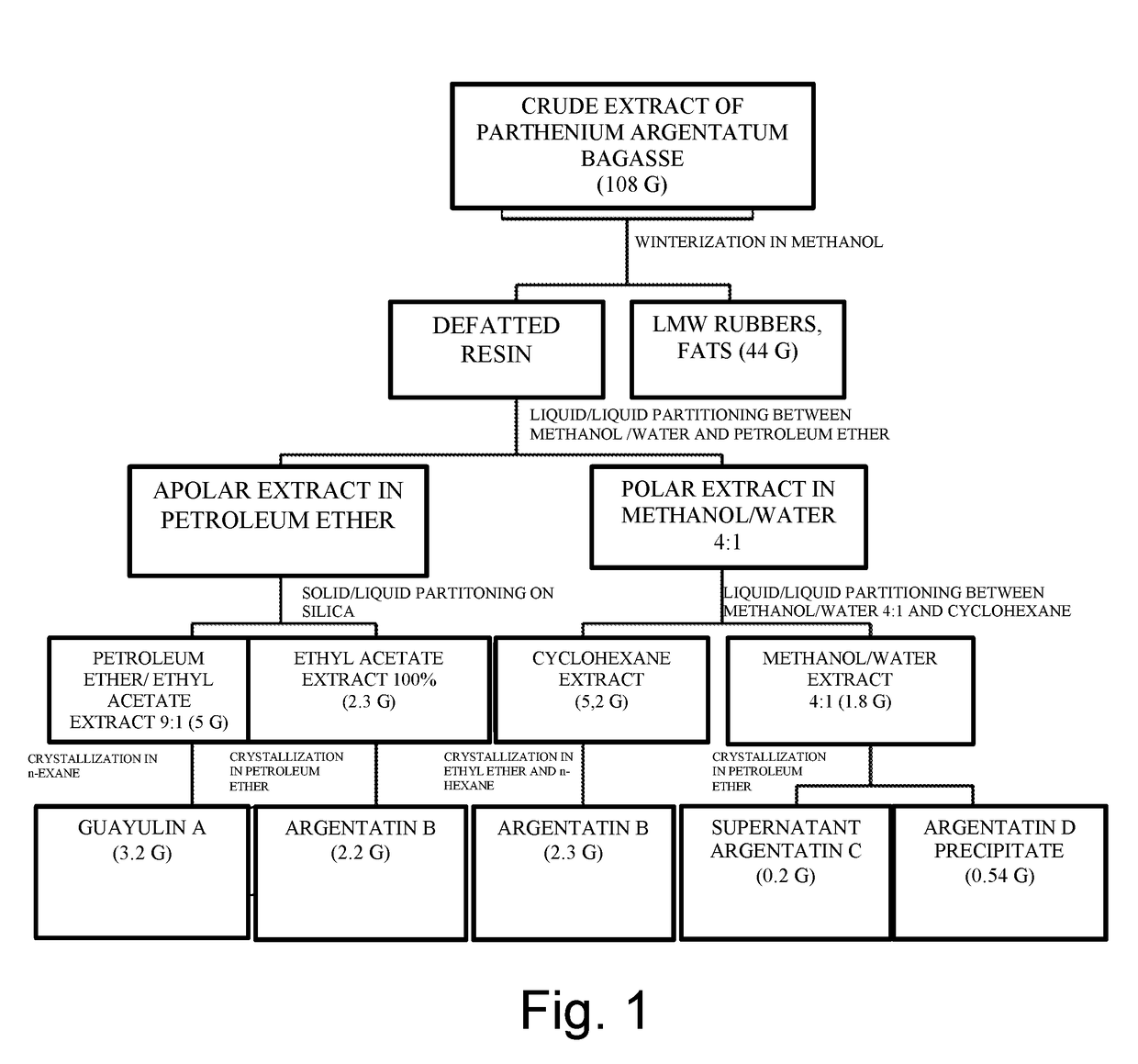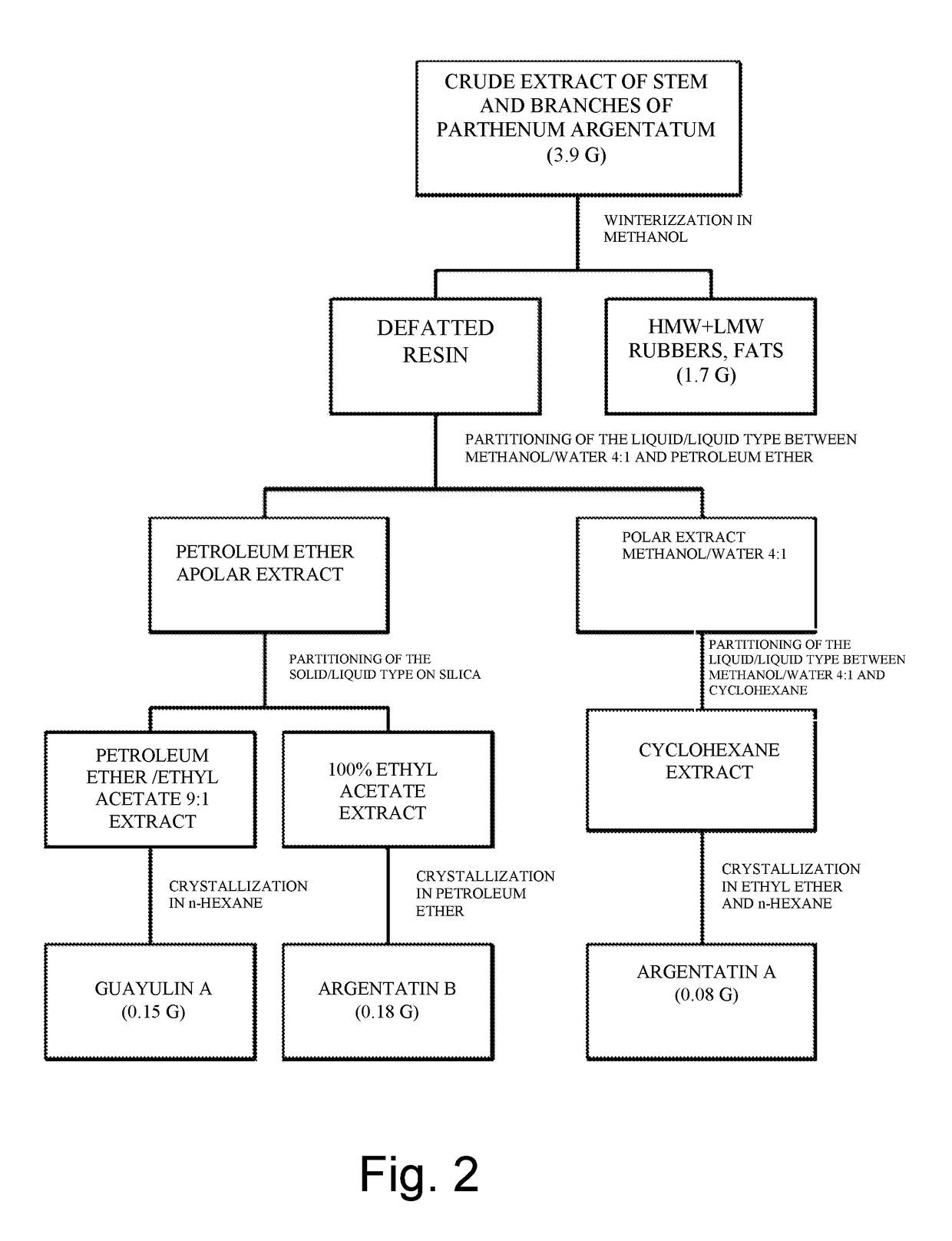Method for the separation of the isoprenic constituents of guayule
- Summary
- Abstract
- Description
- Claims
- Application Information
AI Technical Summary
Benefits of technology
Problems solved by technology
Method used
Image
Examples
example 1
Winterization of the Crude Extract of Parthenium Argentatum (FIG. 1)
[0137]108 g of crude extract obtained from the bagasse of Parthenium argentatum were slowly dissolved under continuous stirring at 40° C. in methanol (800 mL) by using a volume of solvent of 1.0 L / 100 g of crude extract.
[0138]After the complete dissolution the mixture was cooled at room temperature for 1 hour and then at 0° C. for 24 hours. A compact precipitate was formed and then recovered by filtration under 1.5 mbar.
[0139]The residue having a gummy consistency was then washed with methanol, cooled to 0° C. and air-dried at room temperature obtaining 44 g of fats and rubbers with a low molecular weight.
[0140]The polar liquid fraction (mother liquors) containing the defatted resin was recovered for the subsequent steps.
example 2
Partitioning of the Liquid-Liquid Type of the Resin (FIG. 1)
[0141]800 mL of methanol solution obtained from the process of winterization, for separating the lipophilic component of the crude resin, were diluted to a final volume of 1 L with 200 mL of water obtaining a mixture of methanol / water 4:1.
[0142]The obtained mixture was subjected to a partitioning process with petroleum ether (200 mL). After having reached the equilibrium between the phases, the organic phase was separated from the aqueous phase.
[0143]The latter was extracted again with 200 mL of petroleum ether for 3 times. The resultant organic phase was then washed with 200 mL of a mixture of methanol / water (4:1), recovered, anhydrified and concentrated under low pressures up to the complete drying thus obtaining 7.7 g of product.
[0144]The partitioning process was monitored by TLC (Thin layer chromatography).
example 3
Solid-Liquid Partitioning of the Apolar Extract (FIG. 1)
[0145]7.7 g of apolar extract obtained by the liquid-liquid partitioning process of 108 g of crude resin were dissolved in 60 mL (˜7 mL / g) of a mixture of petroleum ether and ethyl acetate 9:1 and adsorbed on a bed of 200 mL of silica gel (70-230 mesh, 25 mL / g).
[0146]The solvent was removed from the suspension by evaporation under reduced pressure or vacuum filtration, and the resultant solid matrix was washed three times with 100 mL of the solvent mixture used for the absorption.
[0147]This operation was carried out into a reaction flask according to a method known to the person skilled in the art. The de-absorption solution was evaporated, thus obtaining a mixture of guayulins (5.0 g). The solid matrix was then washed with 200 mL of ethyl acetate, thus recovering argentatin B (2.3 g).
PUM
| Property | Measurement | Unit |
|---|---|---|
| Polarity | aaaaa | aaaaa |
Abstract
Description
Claims
Application Information
 Login to view more
Login to view more - R&D Engineer
- R&D Manager
- IP Professional
- Industry Leading Data Capabilities
- Powerful AI technology
- Patent DNA Extraction
Browse by: Latest US Patents, China's latest patents, Technical Efficacy Thesaurus, Application Domain, Technology Topic.
© 2024 PatSnap. All rights reserved.Legal|Privacy policy|Modern Slavery Act Transparency Statement|Sitemap



